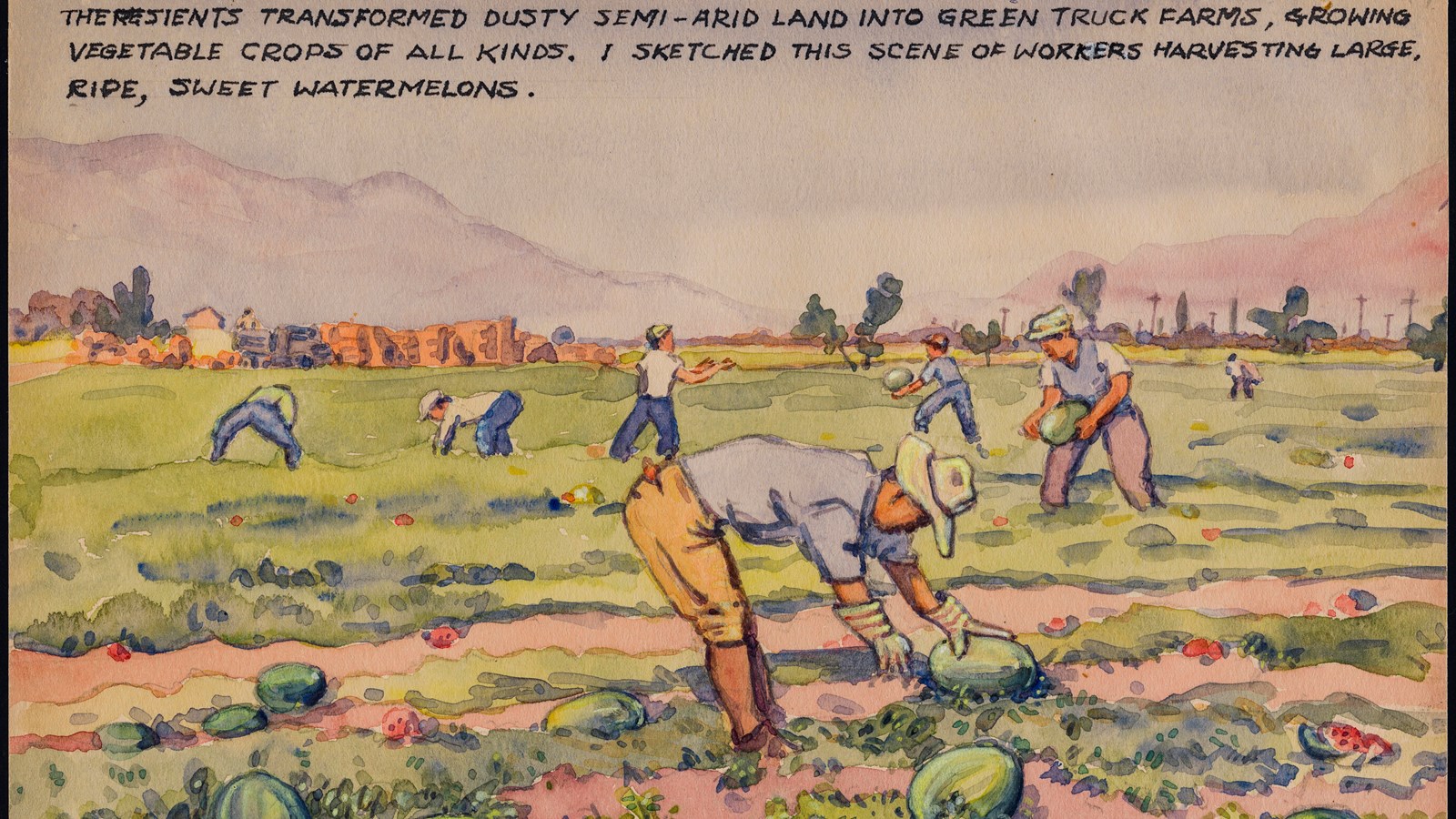Last updated: October 7, 2021
Place
Water in the Desert

Courtesy of Tanaka Family; Takamura Collection, UCLA
Historical/Interpretive Information/Exhibits
“We have problems to combat here which are new to us. We don’t know these hot dry winds. There are no rabbits to plague us . . . Everything is so different and we have to do much experimenting.”
John Fukasawa, a Manzanar farm foreman
Manzanar receives very little rain, but in the late spring, snow melting in the Sierra Nevada replenishes nearby streams. Tumbling down granite-walled canyons, those streams bring water that infuses life into this high desert landscape. For centuries, humans have harnessed that water to coax food from the land.
Paiutes diverted stream water to irrigate plots of edible native plants. After passage of the Homestead Act in 1862, farmers and rangers who came to support nearby miners staked claims on those irrigated fields. North of Manzanar is a slender line of cottonwood and willow trees marking Shepherd Creek, named for a family that settled here in 1864. Later ranchers and farmers dug canals to irrigate hay and grain fields. In 1905, brothers George and Charles Chaffey began buying land to subdivide into the orchard farms that gave Manzanar (Spanish for apple orchard) its name. George Chaffey installed concrete irrigation pipes to conserve water, and by 1921 there were 20,000 fruit trees growing at Manzanar. In the 1920s, the City of Los Angeles bought up Manzanar farms to secure additional water rights for the city. Inyo County declared the town of Manzanar abandoned in 1941.
The War Relocation Authority utilized Manzanar’s abundant water supply to make the camp as agriculturally self-sufficient as possible. Japanese Americans restored earlier canals and pipes, and diverted Shepherd Creek into a 900,000 gallon reservoir constructed northwest of here in 1942. In fields north and south of the camp’s living area, they cultivated 440 acres with 35 varieties of vegetables, grains, and fruits. In the area in front of you, victory gardens flourished, yielding bountiful vegetables and colorful flowers.
Water Wars
During the early 1900s, a thirsty, growing Los Angeles looked toward Owens Valley for its water. In 1913, the 233-mile Los Angeles Aqueduct started carrying much of the water south. Hailed as an engineering triumph and still in use, the aqueduct remains a flashpoint for conflicts over the region’s water and environment. Since the 1920s, the Los Angeles Department of Water and Power (LADWP) has owned nearly all land and water rights in the valley.
The federal government leased Manzanar from LADWP from 1942-1947. Fifty years later, the US government exchanged other federal land to create Manzanar National Historic Site.
